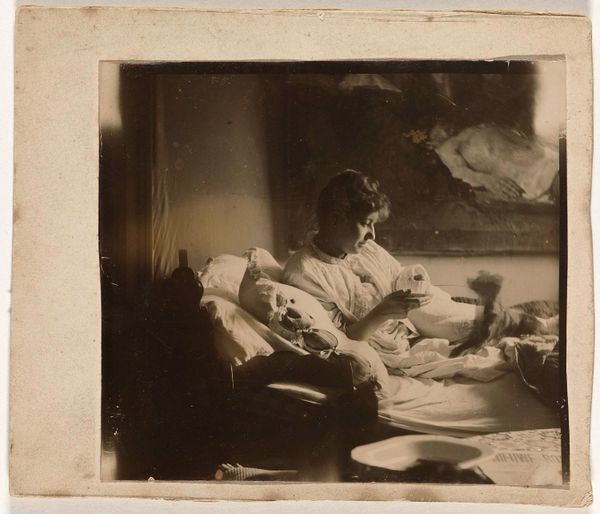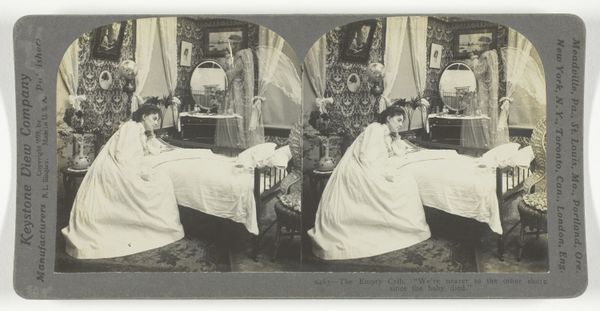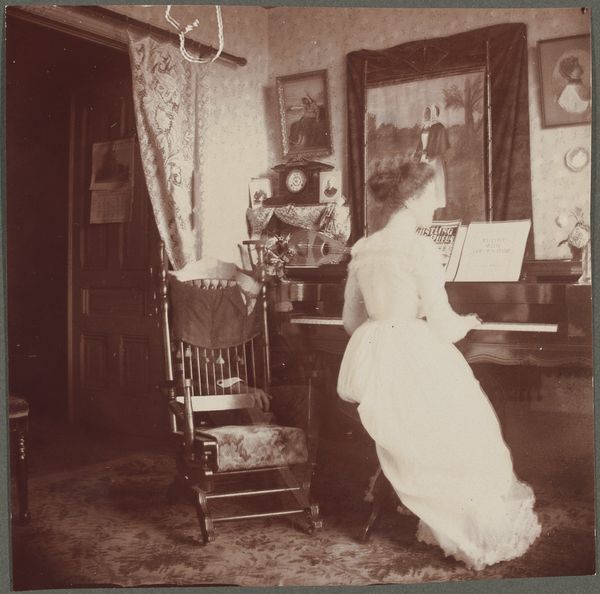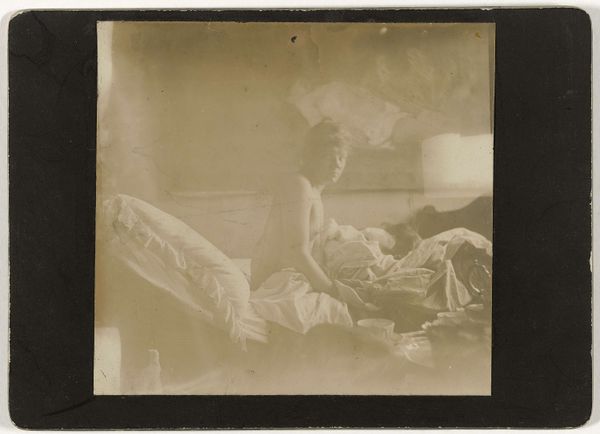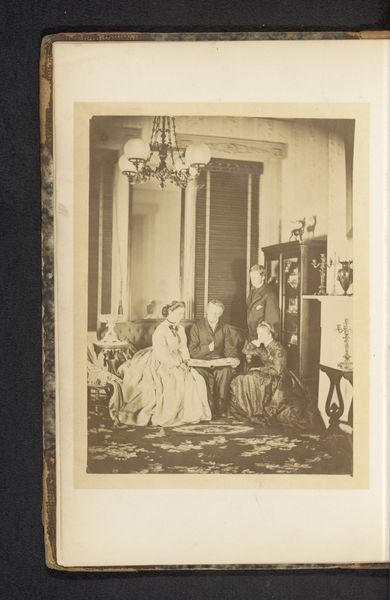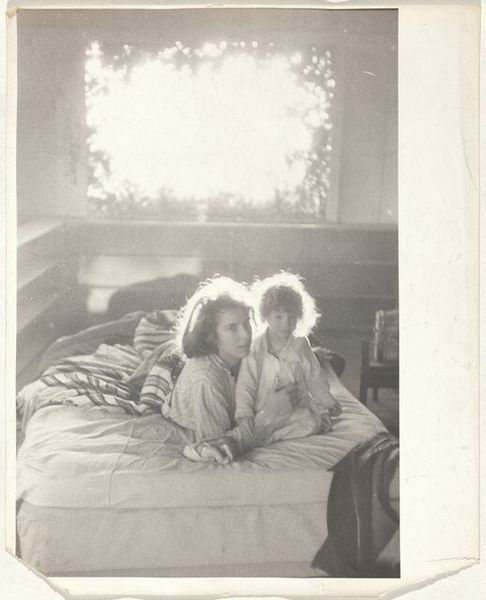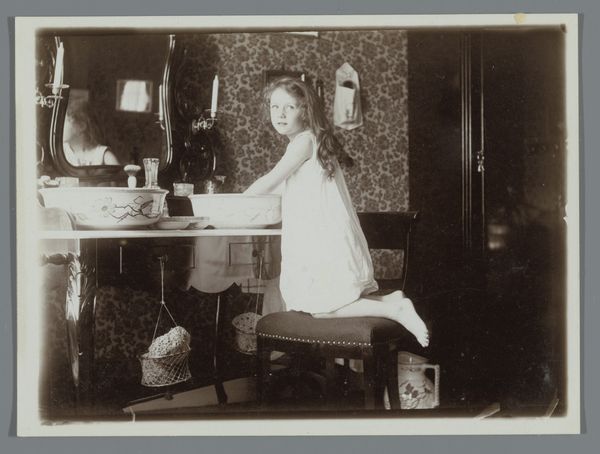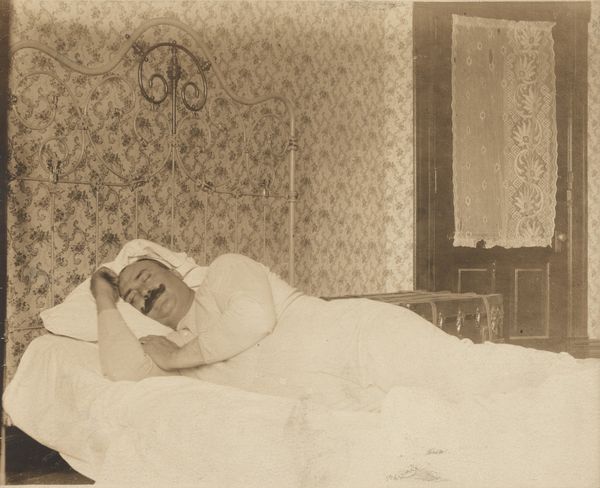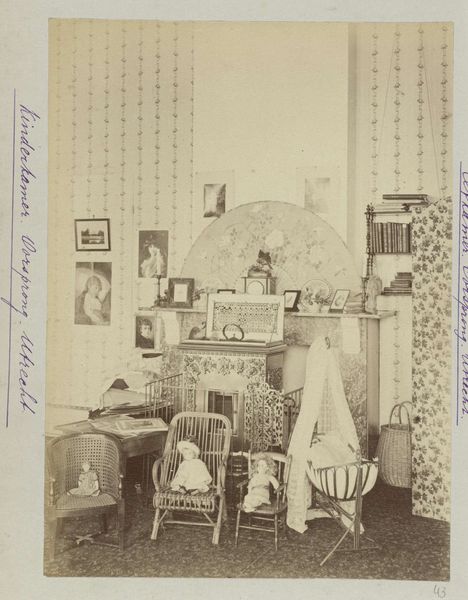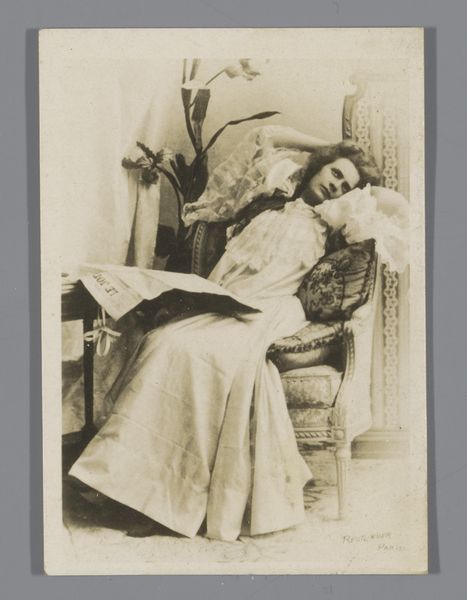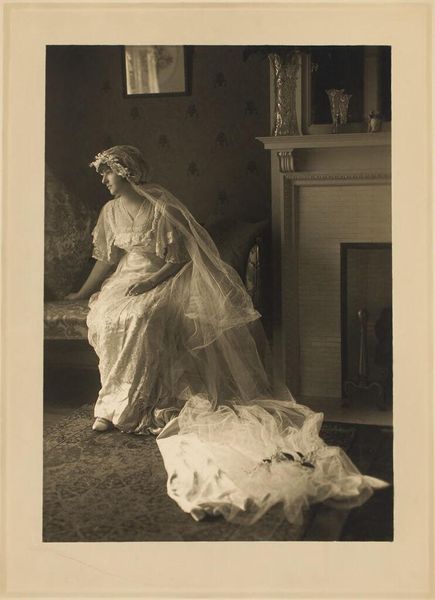
Dimensions: 7 3/8 x 9 1/8 in. (18.73 x 23.18 cm) (image, sheet)
Copyright: No Copyright - United States
Curator: This gelatin-silver print, created circa 1910 by Dwight A. Davis, is currently housed here at the Minneapolis Institute of Art. While untitled, the work evokes a strong sense of quiet domesticity. What are your immediate impressions? Editor: I feel a kind of melancholic peace. There's a muted quality to the light, and the whole scene, the woman by the fire...it suggests introspection, maybe a touch of loneliness? Curator: The processes involved in Pictorialist photography aimed to elevate the medium. Notice the soft focus. Davis' manipulation of the gelatin-silver print, with the use of texture and tonality, challenges the supposed objectivity of photography, turning it into a vehicle for expressing emotion. It certainly is indicative of labor-intensive craftsmanship. Editor: Absolutely! I mean, you could almost imagine it as a dream caught in a jar. It feels less like a "snapshot" and more like a painting trying to be a photograph, deliberately blurring the lines, wouldn't you say? Curator: Yes, and think about the accessibility. While pictorialism sought artistic recognition, gelatin-silver prints allowed for easier reproduction and distribution. The consumption of art broadened alongside shifting social roles and expectations. What were photographs, and whom did they serve? It's fascinating to consider its place in that transitional era. Editor: It really speaks to that period when photography was finding its artistic voice, experimenting with texture, and playing with light. The way Davis frames this woman, bathed in the fireplace glow, is less about documenting her and more about capturing a fleeting mood, an inner world, something profound, and beautifully mysterious. Curator: Thinking about it, Dwight Davis gives us something of enduring social significance; to examine how our perception of art is intertwined with both artistic creation, materials used, and their accessibility. Editor: And I suppose it suggests that a quiet moment can hold so much meaning, which, of course, I feel is why we look at art in the first place.
Comments
No comments
Be the first to comment and join the conversation on the ultimate creative platform.

